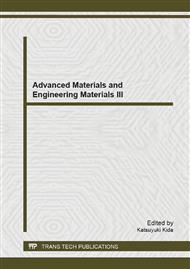p.375
p.381
p.387
p.392
p.397
p.402
p.406
p.410
p.415
Corrosion Behavior of Austenitic Stainless Steel in High Sulphate Content
Abstract:
Austenitic stainless steels especially 316L has been used extensively in many sectors including construction, medical and household appliances due to their highly resistance to corrosion attack, reasonable cost and excel in mechanical properties. However, in corrosive media, 316L are susceptible to localised corrosion attack especially in seawater and high temperature. The corrosiveness of media increased as the anions contents increased. This paper presents the corrosion mechanism of 316L exposed to high concentration of sulphate in the salinity of seawater. The solution (media) was prepared according to the same composition as seawater including pH, salinity and dissolved oxygen. The corrosion mechanism were characterized to breakdown potential (Eb) of 316L which are the potential once reaches a sufficiently positive value and also known as pitting potential. This is the most point where localized corrosion susceptibility to evaluate and considered a potential, which could be an appropriate point according to any given combination of material/ambient/testing methods. The Eb value were identified at 4°C, 20°C, 50°C and 80°C and compared with Eb value of 316L in seawater. The Eb value of 316L in high sulphate are higher compared to seawater in every temperature which elucidate that some anions accelerate corrosion attack whereas some anions such as sulphate behaves as inhibiting effect to 316L.
Info:
Periodical:
Pages:
397-401
Citation:
Online since:
February 2014
Authors:
Price:
Сopyright:
© 2014 Trans Tech Publications Ltd. All Rights Reserved
Share:
Citation:


